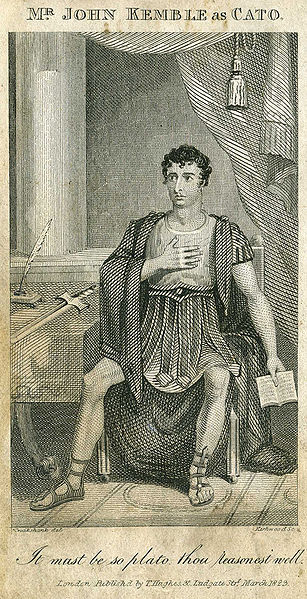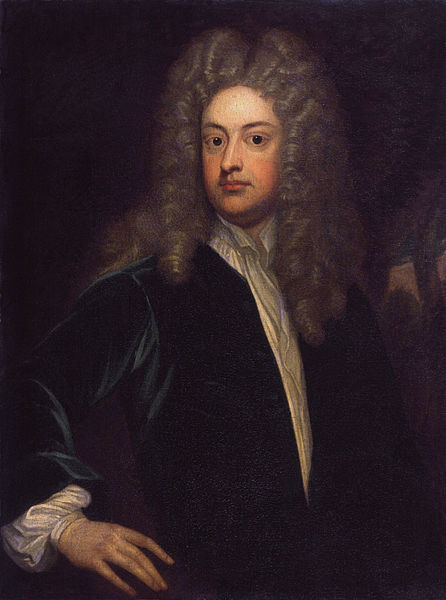Cato, a Tragedy is a play written by Joseph Addison in 1712 and first performed on 14 April 1713. It is based on the events of the last days of Marcus Porcius Cato Uticensis, a Stoic whose deeds, rhetoric and resistance to the tyranny of Julius Caesar made him an icon of republicanism, virtue, and liberty. Addison's play deals with many themes such as individual liberty versus government tyranny, republicanism versus monarchism, logic versus emotion, and Cato's personal struggle to hold to his beliefs in the face of death. The play has a prologue written by Alexander Pope and an epilogue by Samuel Garth.
John Philip Kemble as Cato by Thomas Lawrence, 1812.
The actor John Kemble in the role of Cato in Addison's play, which he revived at Covent Garden in 1816, drawn by George Cruikshank.
Joseph Addison was an English essayist, poet, playwright, and politician. He was the eldest son of Lancelot Addison. His name is usually remembered alongside that of his long-standing friend Richard Steele, with whom he founded The Spectator magazine. His simple prose style marked the end of the mannerisms and conventional classical images of the 17th century.
"Kit-cat portrait" by Godfrey Kneller, c. 1703–1712
Joseph Addison: engraving after the Kneller portrait
The actor John Kemble, in the role of Cato, revived at Covent Garden in 1816, drawn by George Cruikshank.
Addison in 1719, the year he died





